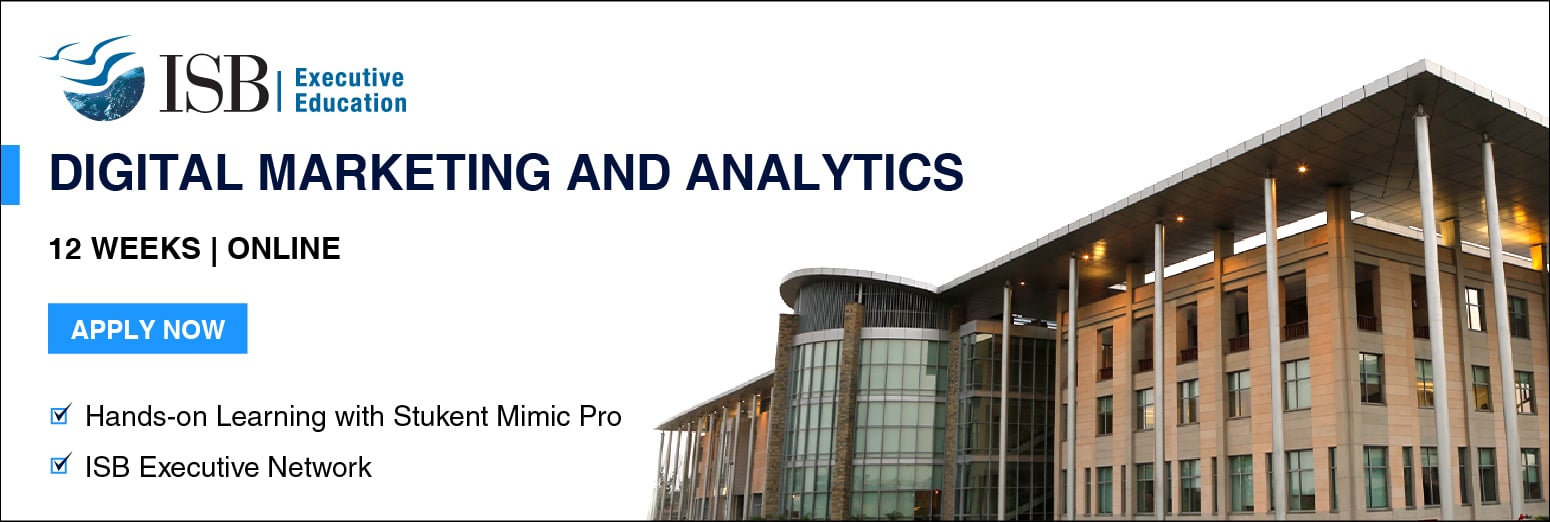4 Myths About E-commerce and Digital Marketing Debunked

Technology holds a tremendous influence over lives in the 21st century. In fact, words like social media, cloud, digital marketing, and e-commerce are a part of the lexicon. However, there is often a tendency to conflate terms like e-commerce and digital marketing when in fact the difference between e-commerce and digital marketing is vast. Briefly, e-commerce is akin to setting up a shop in a marketplace online, whereas digital marketing is putting up banners advertising the shop mentioned above. So, with this in mind, let’s shed some light and take a closer look at the difference between e-commerce and digital marketing.
In this blog, we will discuss:
- E-Commerce Explained
- Digital Marketing Explained
- Key Difference Between E-commerce and Digital Marketing
- Integration
- Challenges and Considerations
E-commerce Explained
The difference between e-commerce and digital marketing is in their respective roles in the online business landscape. E-commerce, short for electronic commerce, is the buying and selling of goods and services over the Internet. This market is growing at an accelerated pace all over the world, including India. In fact, the Indian Brand Equity Foundation predicts that the Indian e-commerce market will clock a gross merchandise value of ₹2.9 trillion by 2030.
A. Core Features
1. Online Storefronts
An online storefront is the digital equivalent of physical shops in the e-commerce world. They allow you to display your products, manage orders, and interact with customers. The shops are generally found on marketplaces such as Amazon, Myntra, Flipkart, etc.
2. Shopping Carts
These are fundamental aspects of e-commerce that allow shoppers to select and store products or services for purchase. A shopping cart is, thus, similar to a shopping cart in a store, where customers can add items, review their selections, and proceed to checkout to complete the purchase.
3. Payment Gateways
They facilitate payments online for goods and services bought from the storefront. It is responsible for securing, authorizing, and processing electronic transactions by acting as a bridge between the merchant’s website and the financial institutions involved in the transaction.
4. Product Catalogs
A catalog is like a digital showroom of your e-commerce store. It highlights the store’s products, new arrivals, seasonal offerings, and promotions. It is also used to offer customized product recommendations based on data insights from browsing history.
B. Types of E-commerce
1. Business to Consumer (B2C)
This model generally refers to transactions between businesses and consumers in the online marketplace. It is the most common form of e-commerce, including Amazon and online retailers that directly sell to individual consumers.
2. Business to Business (B2B)
This model chiefly focuses on transactions between companies instead of transactions with consumers. A B2B transaction typically involves larger quantities and higher values compared to B2C purchases.
3. Consumer to Consumer (C2C)
The transactions take place between individuals under this model. They buy and sell goods and services directly with each other through platforms such as eBay and OLX, among others. It is also possible to conduct a trade via groups on social media.
4. Consumer to Business (C2B)
It is a business model where consumers offer products, services, or their expertise to businesses in the online marketplace. The C2B model often involves crowdsourcing or freelancing with a bidding or negotiation process.
ALSO READ: How Social Commerce is Reshaping Modern Retail
C. Key Components
1. Inventory Management
It is a particularly crucial piece in e-commerce wherein firms have to balance stock so as to avoid overstocking without compromising their ability to meet customer demand. It is important to manage stock while keeping costs and space in check.
2. Order Processing
The process involves a series of steps and activities that a business undertakes to fulfill customer orders, from order placement to the delivery of the product or service. It is essential for ensuring a smooth business operation.
3. Customer Support
This is one of the most critical aspects of e-commerce. A robust customer support not only enables a positive customer experience but also builds customer loyalty. It involves providing assistance, addressing inquiries, and resolving issues faced by customers.
4. Secure Transactions
An e-commerce platform is likely to win the trust of its consumers significantly by providing safe and secure transactions. They can use measures such as reliable payment gateways, encryption, and verification to prevent fraud.
ALSO READ: Guide to Product Management in E-commerce
Digital Marketing Explained
It is important to understand digital marketing before we can deduce the difference between e-commerce and digital marketing. It generally refers to promoting products and services using online channels and technologies to connect with potential customers on the Internet.
A. Core Strategies
1. Search Engine Optimization (SEO)
SEO is a process that encompasses a set of actions aimed at optimizing a website or online content to boost its visibility and ranking on search engine results pages, especially Google.
2. Social Media Marketing (SMM)
A company aims to connect with users on social media platforms like Facebook and Instagram, engaging them with posts rather than ads.
3. Content Marketing
The focus is on creating, publishing, and distributing valuable and relevant content so that a firm can attract and engage a target audience.
4. Email Marketing
The strategy is certainly indispensable to digital marketing because it is cost-effective. It specifically involves sending targeted messages to a group of individuals through email.
5. Pay-Per-Click (PPC) Advertising
This is a way of buying visits to a website rather than earning those visits organically. Advertisers pay a fee as soon as their ad is clicked on search engines, social media platforms, and websites.
ALSO READ: The Storyteller’s Guide to Digital Marketing Success: 10 Essential Techniques
B. Goals of Digital Marketing
1. Brand Awareness
It is a critical stage at which a brand tries to make itself recognizable while hundreds of brands vie for the same attention as your brand.
2. Lead Generation
It is especially important since it involves identifying and attracting potential customers (leads) to convert them into paying customers.
3. Customer Engagement
A customer has endless options, so customer engagement plays a pivotal role. It basically refers to building and maintaining a strong relationship between a brand and its customers.
4. Conversion Optimization
The process improves the overall effectiveness of a website or marketing campaign to increase the percentage of visitors. They perform the desired action, such as buying or filling out a form, etc.
ALSO READ: How to Become a Digital Marketing Executive: Everything You Need to Know
C. Metrics and Analytics
1. Tracking Website Traffic
A firm uses tools like Google Analytics to discover who is visiting its site, how they are finding it, and what they are doing once they arrive. This, consequently, can attract even more visitors.
2. Conversion Rates
The metric tells the story of how marketing efforts turn visitors into engaged leads specifically. For example, a website with 1,000 visitors and 50 purchases would have a 5% conversion rate.
3. Return on Investment (ROI)
ROI is a key metric that measures the profitability and success of an investment relative to its cost. It is often used in digital marketing to gauge the efficacy of various marketing campaigns.
ALSO READ: Advantages of Digital Marketing: Top 10 Reasons to Invest in It
Key Difference Between E-commerce and Digital Marketing
So, what is the difference between e-commerce and digital marketing? The answer lies in the following:
A. Focus and Purpose
1. E-Commerce: Sales and Transactions
An online business has to monitor and optimize sales and transactions in order to secure its growth. The firm deploys several measures such as a smooth website optimized for mobiles, transparent pricing, clear product descriptions, streamlined checkout, ratings, feedback, etc.
2. Digital Marketing: Promotion and Brand Visibility
They are the proverbial wings that help brands soar above the rest. A firm spreads the word about its offerings, builds a brand identity, and, in turn, influences customers’ buying decisions. These efforts need to be sustained by firms via continuous investments.
B. Scope
1. E-Commerce: Transactional Platforms
They can be defined as digital systems that facilitate online transactions between buyers and sellers. These platforms provide a virtual marketplace where businesses and consumers can buy and sell goods and services. For instance, Myntra and Snapdeal are popular Indian platforms.
2. Digital Marketing: Multichannel Promotion
A firm relies on multiple online channels to reach and engage with target audiences in this strategy. The goal, therefore, is to maximize the reach and impact of a campaign. A firm can use, for instance, SEO, SMM, PPC advertising, email and content marketing, etc., for this purpose.
ALSO WATCH: Digital Marketing and Analytics | ISB
C. Components
1. E-Commerce: Online Store Infrastructure
Essentially, the infrastructure of an online business is like its backbone. It contributes to its functionality, performance, and overall success. This involves choosing the right platform, a reliable web hosting provider, a domain name, a content delivery network, payment gateways, etc.
2. Digital Marketing: Content Creation, SEO, Social Media Management
Essential components of successful digital marketing involve a firm’s strategic engagement and customer retention through content creation. Additionally, the firm enhances its online presence by implementing SEO, PPC, and email marketing strategies. To further amplify its reach, the use of social media platforms and leveraging social media influencers to boost website traffic.
D. Interaction With Customers
1. E-Commerce: Direct Sales and Transactions
They refer to a specific retail model where products or services are sold directly to consumers, bypassing intermediaries altogether. The integration of a seamless and secure transaction process is particularly essential for a positive customer experience in direct sales.
2. Digital Marketing: Engagement and Communication
These fundamental aspects require building meaningful connections with the target audience using various online tools. A firm creates interactive and personalized experiences to enable a relationship between a brand and its customers.
ALSO WATCH: A Quick Guide to a Career in Digital Marketing
Integration
There is a difference between e-commerce and digital marketing but the two are not mutually exclusive. In fact, it is important to focus on their synergies instead of dwelling on the question of what is the difference between e-commerce and digital marketing.
A. Synergy Between E-Commerce and Digital Marketing
1. Leveraging Digital Marketing for E-commerce Promotion
It is important to look beyond the difference between e-commerce and digital marketing before leveraging the latter for promotion. The tools of digital marketing can be used to drive visibility, attract potential customers, and increase sales of a firm’s e-commerce platform. For example, a business can use SEO, SMM, PPC, content and email marketing, social media influencers, etc., to its advantage.
2. Utilizing E-commerce Data for Targeted Digital Marketing Campaigns
E-commerce data is certainly instrumental for crafting targeted digital marketing campaigns that resonate with everyone. A business can identify its audience and their behavior using purchase history, browsing patterns, location, and demographics to optimize advertising budgets accordingly. The data is also handy for data analytics and measuring campaign performances.
ALSO WATCH: Top 10 Jobs in Digital Marketing | Career in Digital Marketing & Jobs
Challenges and Considerations
The difference between e-commerce and digital marketing is visible in the challenges they pose. Let’s examine some of them:
A. E-commerce Challenges
1. Security Concerns
Several security issues stem from the use of e-commerce platforms. One can be a victim of data breaches, phishing attacks, or payment fraud, among others.
- In a data breach, a hacker steals sensitive customer information such as addresses and credit card numbers.
- A phishing attack involves deceptive emails or websites designed to extract personal information via malicious links that install malware.
- Payment fraud refers to the use of stolen credit card information or other methods to make unauthorized purchases.
2. Competition
This is a significant challenge in the e-commerce industry, and businesses operating in this space must navigate and address various challenges to stay competitive.
- For instance, some e-commerce markets may be saturated with numerous competitors, making it difficult for new entrants to gain a foothold.
- There is a risk of price wars and deep discounting in situations with intense competition, thus affecting profit margins.
- It also means that a firm has to incur heavy costs in building and retaining customer loyalty when consumers have numerous options.
B. Digital Marketing Challenges
1. Algorithm Changes (eg Search Engine Updates)
A slight change in the algorithm, especially those implemented by search engines, can have a significant impact on digital marketing strategies. It then becomes critical to adopt strategies to avoid disruptions in online visibility, traffic, and overall brand awareness. Let’s look at the impact:
- An update can cause the brand visibility to fluctuate in search rankings.
- Consequently, there can be a decline in organic traffic.
- It can affect the efficacy of paid advertising performance, increasing costs subsequently.
2. Keeping up With Evolving Trends
It may get overwhelming to keep up with the changes in the world of digital marketing, especially emerging technologies and tools. These trends emerge faster than you can say “algorithm update.” Here’s a look at some other challenges:
- It can be difficult to keep up with the information out there in light of countless blogs, articles, webinars, and conferences.
- Adopting new technologies may be gradual due to constraints like limited budgets and small teams.
ALSO READ: 9 Ways to Make SEO and PPC Work Together to Boost Your Traffic
In conclusion, the internet presents a dynamic place for every firm to do business. They need to distinguish the difference between e-commerce and digital marketing to craft an effective online strategy. A lot of them are going to be in the market looking for people to help them with their digital transformation. The opportunity is ripe for the taking. Emeritus offers many courses that will help level up your digital marketing game. They are designed by industry experts in such a way that they include the latest trends and technologies in today’s digital marketing landscape. Sign up for one of the digital marketing courses today and future-proof your career!
Write to us at content@emeritus.org







